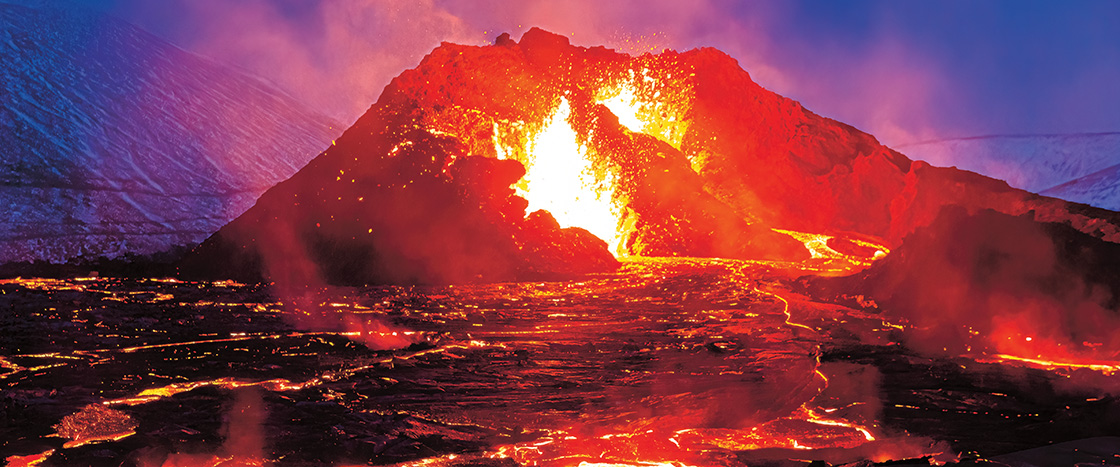Hundreds of people trekked over a dark, rocky landscape in Iceland. The sharp smell of burning rock filled their noses. With each step, the air grew hotter. Finally, they reached their destination: a flowing river of lava!
In March 2021, a volcano called Fagradalsfjall (fah-grah-dahls-fyaht-el) began erupting for the first time in about 6,000 years. The melted rock flowed down the mountain’s sides and oozed from cracks in the ground. As it cooled, it hardened to form new layers of jagged, black land.
All volcanic eruptions can be dangerous. Luckily, this one wasn’t a big threat to nearby residents. It wasn’t explosive, and no one lived in the lava’s path. In fact, crowds gathered to watch the spectacular scene. Some people even cooked hot dogs over the cooling lava!
Volcano scientists called volcanologists headed to the volcano too. They wanted to collect samples of the gooey lava. By studying the samples, scientists can better understand how the volcano works. “It’s like opening a window into parts of the planet we never get to see,” says volcanologist Edward Marshall.
Hundreds of people hiked over a dark, rocky landscape in Iceland. A sharp smell filled their noses. It was the smell of burning rock. With each step, the air changed. It grew hotter. Finally, they reached their destination: a flowing river of lava!
In March 2021, a volcano called Fagradalsfjall (fah-grah-dahls-fyaht-el) began erupting. It was the volcano’s first eruption in about 6,000 years. The molten rock flowed down the mountain. It also oozed from cracks in the ground. The molten rock cooled and hardened. This formed new layers of jagged, black land.
All volcanic eruptions can be dangerous. Luckily, this one wasn’t a big threat to nearby residents. It wasn’t explosive. And no one lived in the lava’s path. In fact, crowds gathered to watch the scene. Some people even cooked hot dogs over the cooling lava!
Scientists who study volcanoes are called volcanologists. They headed to the volcano too. They wanted to collect samples of the gooey lava. Studying the samples helps scientists understand how the volcano works. “It’s like opening a window into parts of the planet we never get to see,” says volcanologist Edward Marshall.

